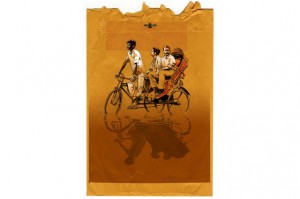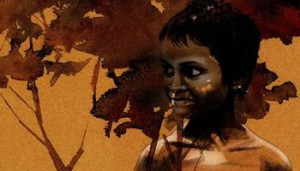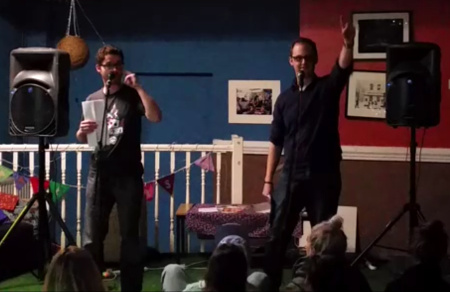Exhibition review: Jamie Hewlett at the Contact
Article published: Monday, September 20th 2010
Contact theatre is currently exhibiting a series of water colours by Jamie Hewlett, the Gorillaz illustrator, produced in response to a trip to areas in Bangladesh ravaged by global-warming induced floods. Nasreen Hunaina went along to review for MULE.
The trip centred around the island Char Atra, which has suffered increased storms and unpredictable weather in recent years, as well as devastating floods. For up to two and a half months each year the island is covered in filthy flood water.
The paintings are simple and beautiful, showing glimpses of the tragedy wrought by climate change in Bangladesh. One of the most effective is an elegant rickshaw and its passengers being pulled across very shallow water; here the beauty of the image conceals the nature of the presence of the floods at a first glance.
Another interesting piece depicts an elevated crop store. Hewlett contextualises this piece with a brief account in the exhibition’s introduction stating the innovative ways by which people in Char Atra are dealing with the effects of global warming. This is powerful as it humanises the disaster to an extent that pictures of death and destruction no longer can to television generations. By inspiring the viewer’s imagination with the ways people respond to the disaster, the reality of the situation is brought home in a far more subtle manner.
De-sensitisation to images of suffering is another theme Hewlett explores, and in accompanying annotations he discusses his desire to show the positivity of the future generations in the painting of some of the children he met. However, portrayals of children are questionable in their capacity to do more than strengthen the deeply ingrained stereotypes of victimhood we have of disaster survivors in poor countries. While pictures of children may be touching, they inspire sympathy and pity rather than respect. Moreover, they do not direct the viewers’ emotions towards climate change as a political and actionable problem but often elicit sentiments of charity.
Undertones of victim stereotypes are unhelpful for creating a holistic and effective approach to tackling climate change as it is tied in with the myth that poor countries are inherently so, when in reality this poverty has structural causes stemming from the economic activity of rich nations. And so if we subconsciously view climate change victims in poor global South countries as ‘just poor’, we negate our own responsibility.
There are a number of paintings featuring children with very limited context given and this leaves you feeling slightly uneasy. An illustrative example bearing somewhat colonial undertones is a painting with the annotation: ‘this is a picture of a beautiful little girl who looks like Mowgli from the Jungle Book’.
 A linked exhibition of photographic portraits is displayed in the Contact’s Café Lounge, each photo accompanied by the individuals’ account of how the floods affect them. The photos are striking and beautiful despite their poignancy. Many of the photos seem to have captured a visible air of strength around their subject, in particular those of women describing their fears for their children in the floods.
A linked exhibition of photographic portraits is displayed in the Contact’s Café Lounge, each photo accompanied by the individuals’ account of how the floods affect them. The photos are striking and beautiful despite their poignancy. Many of the photos seem to have captured a visible air of strength around their subject, in particular those of women describing their fears for their children in the floods.
Overall this exhibition is definitely worth a visit. Many of the paintings are original and challenging and the accompanying photo exhibition provides another powerful angle on the situation. While aspects of his depiction of children can be argued to perpetuate stereotypes which paralyse meaningful discourse on climate change, Hewlett’s succeeds in his aim to raise the profile of those who will suffer disproportionately – and inequitably – the effects of environmental disaster.
Nasreen Hunaina
More: Culture
Comments
-
We strongly believe that we have an excellent opportunity to increase the number of visitors to your website through our white-hat SEO services. Please simply reply to this message and we will be delighted to send you further information.
Comment by Brooke Babcock on October 6, 2010 at 8:13 am
The comments are closed.




